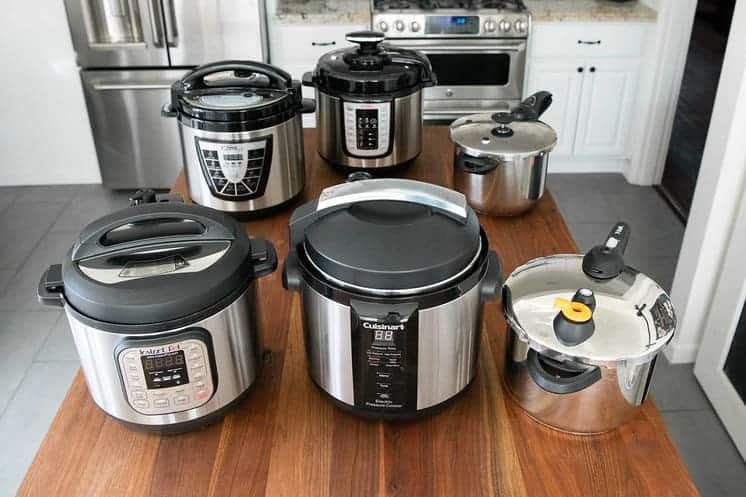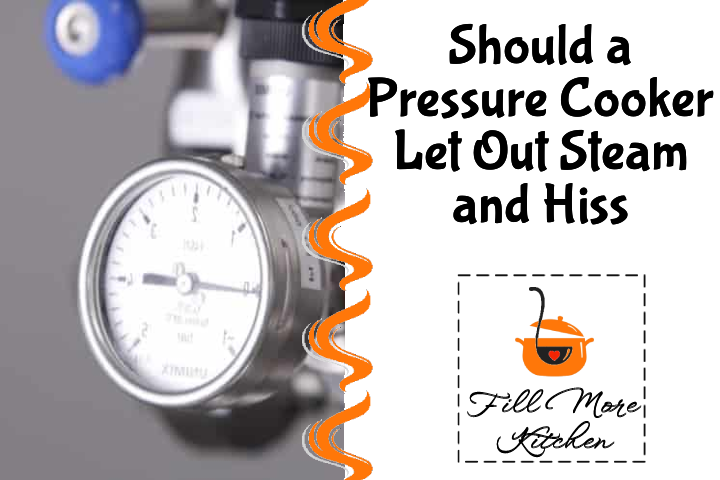Although pressure cookers are widely used in many kitchens for their time-saving benefits, they can be hazardous and confusing if not operated correctly. One frequently asked question is whether a pressure cooker should release steam or not, as the idea of it leaking or causing the lid to pop off can be alarming when dealing with boiling water at high temperatures.
According to the article, it is recommended that pressure cookers should release steam during cooking. The purpose of the lid on a pressure cooker is to ensure that the pressure inside remains at a safe level, and if it becomes too high, a safety valve will open to release any excess pressure, resulting in the hissing sound that is often heard.
However, it is important to note that the pressure release function serves as a crucial safety mechanism, and there are additional reasons why it is necessary.
So Why Do Pressure Cookers Release Steam Through Their Lids?
People often wonder if a pressure cooker should release steam and make a hissing sound, likely because they associate the noise with a tea kettle reaching its boiling point.
The concept behind this is that the water inside the tea kettle becomes extremely hot, causing the lid to rise in an attempt to escape, resulting in a whistling sound. This sound serves as an indication that the water has reached its boiling point and is now ready for use.
Although the pressure cooker operates similarly to a tea kettle, there is one significant distinction: the contents of the pressure cooker may not be fully cooked when steam is released, unlike the aforementioned analogy. To comprehend why steam is emitted from pressure cookers, it is necessary to understand their operation.
A pressure cooker utilizes a type of fluid, like water, stock, broth, or even wine, and confines the steam that emerges from the liquid inside.
In what way is the liquid confined?
When using a pressure cooker, the lid and bottom of the appliance are sealed to allow for an increase in pressure and temperature as vapor rises, which infuses steam into the food and cooks it much faster than other methods.
When water is used in a pressure cooker, the appliance can increase the boiling point of the water above 212 degrees Fahrenheit (100 degrees Celsius), sometimes up to 250+ degrees Fahrenheit, which is why occasional pressure release may be necessary.
Should a Pressure Cooker Hiss & Why is My Pressure Cooker Hissing?
- One possible explanation for a pressure cooker letting out steam and hissing is that it may not have been sealed correctly or completely, which can also occur if the steam valve is left open unintentionally; this can result in insufficient pressure to cook food thoroughly, so it’s important to confirm that the valve is closed and there are no obstructions between the lid and base of the appliance.
- Another reason for a pressure cooker to hiss is when the pressure inside becomes too high, which can only be detected by the hissing sound. If your pressure cooker is correctly sealed and the valve was shut at the beginning of cooking, then this is probably why it’s hissing. To lower the pressure, you have two options.
If you are using a stove-top that relies on flames to generate heat, decrease the temperature, which will promptly impact the pressure cooker.
For those who own an electric stove-top, it is important to note that the cooling down process takes time due to the heat retention of these elements, so if you experience this frequently, consider utilizing two heating elements while operating your pressure cooker – one for pressurizing and the other for simmering to lower the temperature as required.
By the way: it is important to turn on and preheat the element before the pressure cooker reaches its limit, as this will guarantee a quick and immediate response when transferring it from one element to another.
Why Wonât My Pressure Cooker Build Pressure?

If your pressure cooker is unable to maintain pressure, it may be due to a faulty gasket. To address this problem, inspect the gasket for any visible signs of damage.
If there is any food residue present, it should be cleaned with cold water before reinstalling to check if that was causing the problem; however, if there are cracks in the pressure cooker, it will need to be replaced.
Do Electric Pressure Cookers Hiss or Make Noise?
When using an electric pressure cooker, it is expected to operate quietly while cooking and only produce noise when the pressure is released at the end of the cooking cycle.
According to the article, pressure cookers that are electric do not make any noise such as hissing, rattling or whistling because they have a computer chip that maintains stable levels of heat and pressure. At the end of the cooking cycle, a programmed release response will let out the pressure, but it should not produce a loud sound.
Unless your electric pressure cooker has a notification system to indicate when your food is cooked, the absence of sound is expected.
Why Is My Pressure Cooker Foaming?!
Exceeding the pressure cooker’s maximum capacity often leads to foaming, bubbling, and spraying issues, which are common problems encountered by individuals while cooking certain food types.
Pressure cookers have two maximum capacities, high and low, and when cooking foods that expand like beans, rice, and pasta, it is recommended to fill the cooker only up to half its capacity while other types of food can be filled up to two-thirds.
Here is why.
- When cooking rice or grains in a pressure cooker, it is common for them to produce a considerable amount of swelling, bubbles, and foam, which can escape through the pressure release valve.
- The incorrect method of opening is being used. For dishes that produce foam, it is recommended to use the natural release method instead of the valve when opening the pressure cooker.
- Salt was added to the food, and even a tiny amount can significantly increase the production of foamy starch.
Various options are available to address this issue. One can either prepare rice, beans, and grains with vegetables and soup to counteract the expansion and foamy starch response or follow the manufacturer’s instructions for the pressure cooker and avoid filling it beyond half capacity.
Additionally, ensure that you utilize the natural release technique instead of the pressure cooker valve.
If you want to use the natural release technique, keep the pressure release switch/valve closed after cooking and allow the pressure to decrease gradually. When all the pressure has been released, the float valve will descend, and your pressure cooker will be ready to open.
When using an electric pressure cooker, a natural release typically lasts from five to thirty minutes and is recommended for cooking foods that produce foam such as pasta, grains, and rice, as well as for large meat cuts.
You can also check this video about “Should a Pressure Cooker Let Out Steam and Hiss?”
Check out our top 10 reviews!
Related posts
https://fillmorekitchen.com/are-pressure-cookers-worth-it/
https://fillmorekitchen.com/top-12-substitutions-for-apple-cider-vinegar/
https://fillmorekitchen.com/do-gas-appliances-work-when-the-power-is-out/
https://fillmorekitchen.com/why-your-cast-iron-smells-how-to-neutralize-it/
https://fillmorekitchen.com/can-you-eat-baked-potatoes-left-out-overnight/



